What is the Ultimate Guide to Approach Tones on the Bass about?
Quite simply it is a step by step process for your to master using approach tones in your bass lines.
Why are Approach Tones important?
How you approach a root note is just as important as the root note itself. How you approach a note either makes your bass line clear, supports the band, and is groovin’ …or it isn’t. If it isn’t then you’ve probably made a mistake of some kind.
Thinking in terms of approach tones will make music simpler and help you to develop the skill of forward thinking when playing. Approach tones, when done well lead your ear to the next chord, or sound. They do this in a wonderfully simple way of just one note leading to the next.
What are approach tones?
Approach tones are simply the note before the note that you just played. If you just played a D on your bass, the approach tone would be the note you played right before the D. With this definition in mind music is full of approach tones, so full of it in fact each note could be thought of as an approach tone.
To keep things simple we are going to be thinking of approach tones as the note before the Root of your next chord. So if your next chord is D major 7, the approach tone would be the note you played right before the D. If we are thinking of a song in 4/4 time then the approach tone would be the note you played on beat 4.
Types of Approach Tones
We can approach a note from a variety of different ways. We could approach from a minor 3rd, perfect 4th, octave, major 2nd or any musical interval. The two most useful approach tones for bass players are perfect 5th’s and 1/2 steps.
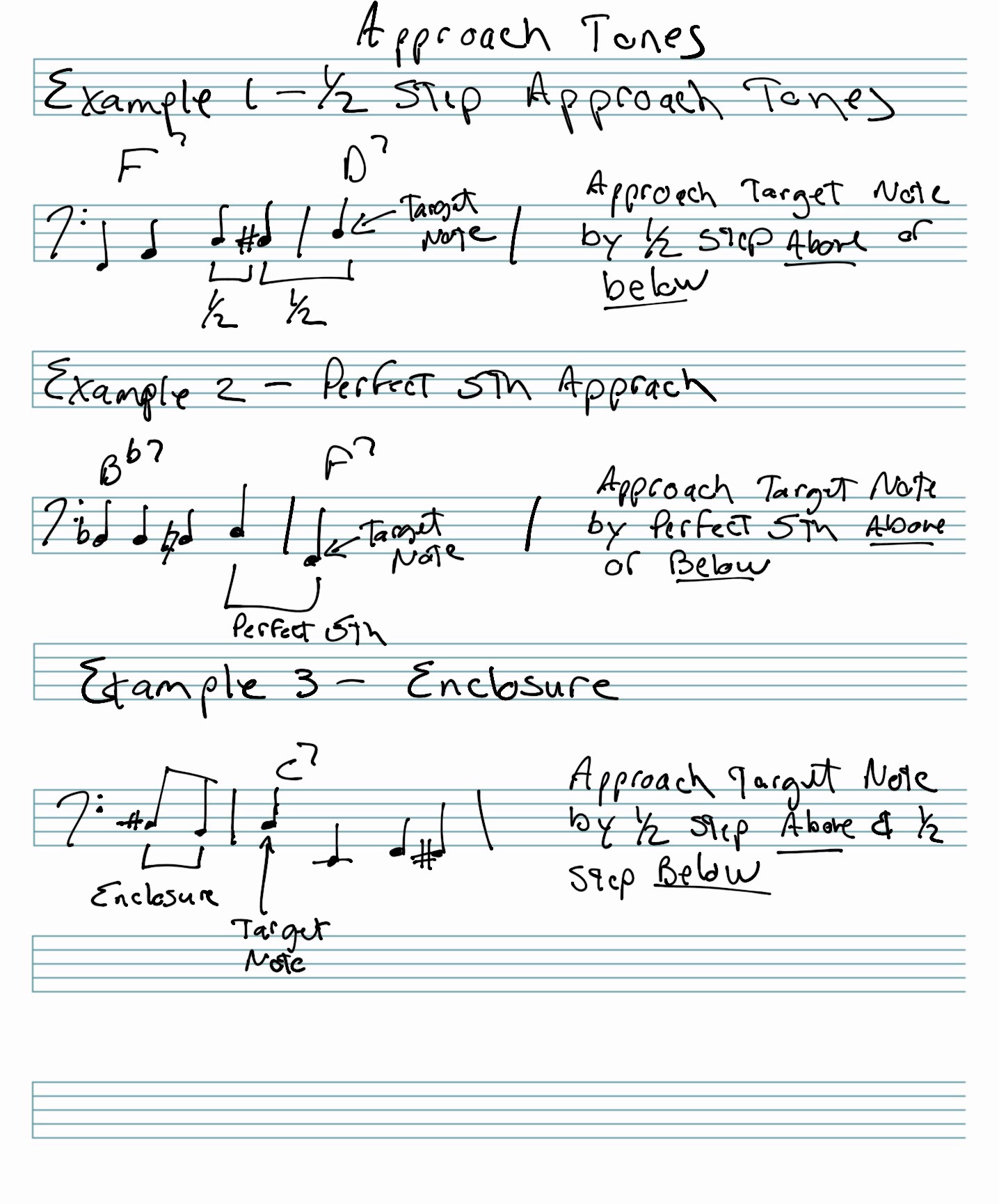
Remember we are talking about approaching a note, so you need to know the perfect 5th and 1/2 steps for any root that you may encounter.
Let’s look at an A-7 chord for example, the perfect 5th is E, and the 1/2 step notes are Bb and G#. If you wanted to use the perfect 5th to approach you would play an E on beat 4. You would do the same thing with the 1/2 step notes (G#&Bb) if your using the 1/2 step approach, and an enclosure is just a combination of the two 1/2 steps on either side.
You will have trouble implementing these ideas into your playing if you don’t know these and can play them without hesitation. It doesn’t mean you can’t use them, but if that’s you then take some time and memorize all your perfect 5th’s and 1/2 steps. You can learn all of these intervals plus a ton of other useful stuff in my Bass Player Course.
Examples of Approach Tones
We are going to use this blues bass line to demonstrate how this works in a musical context. Go ahead and play through this bass line a few times to get familiar with it. I am using a walking bass line here but remember this concept will work no matter what style of music you are playing. Jazz and Blues progressions are just a convenient and familiar way to work some of this stuff out.
Blues Bass Line
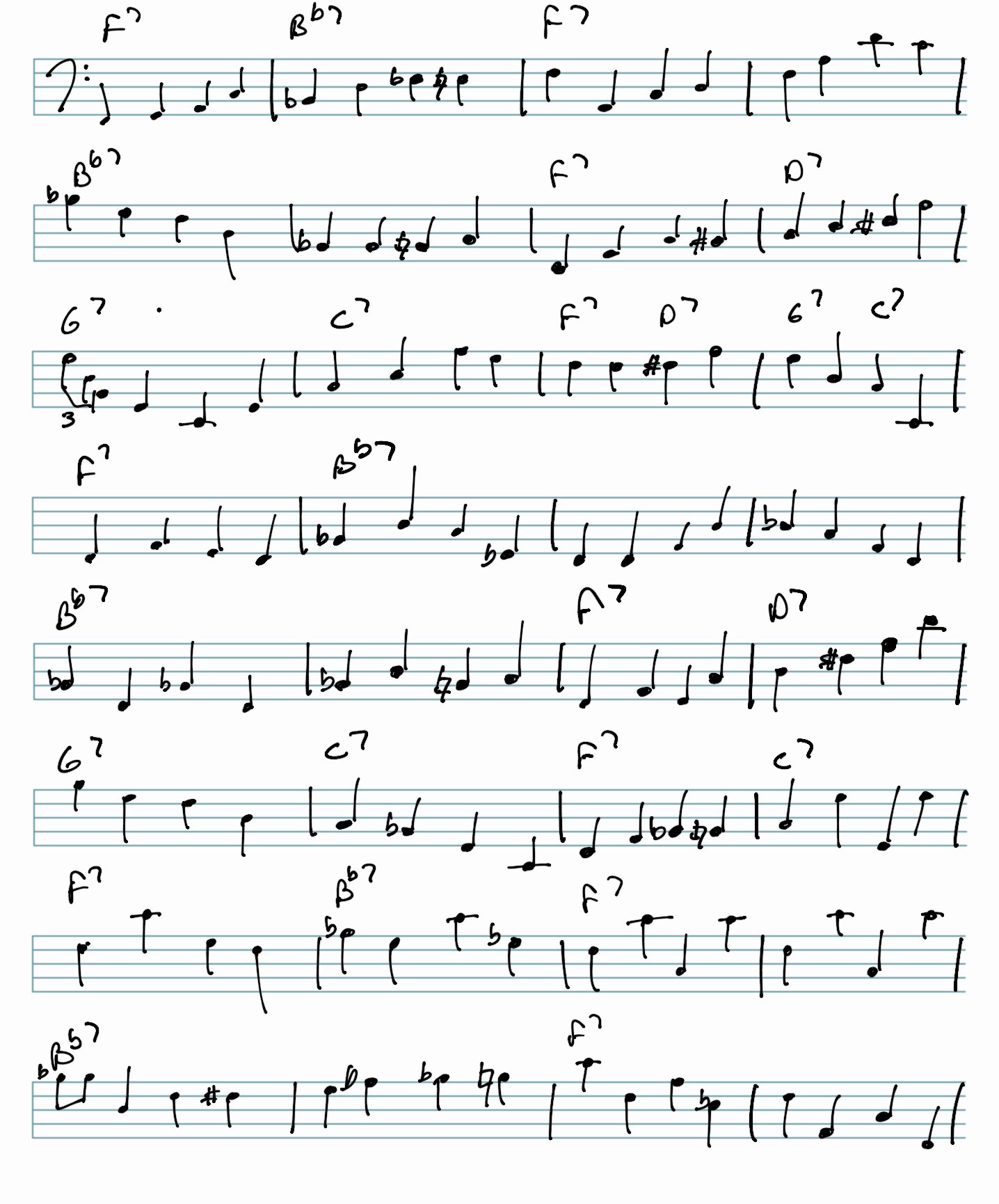
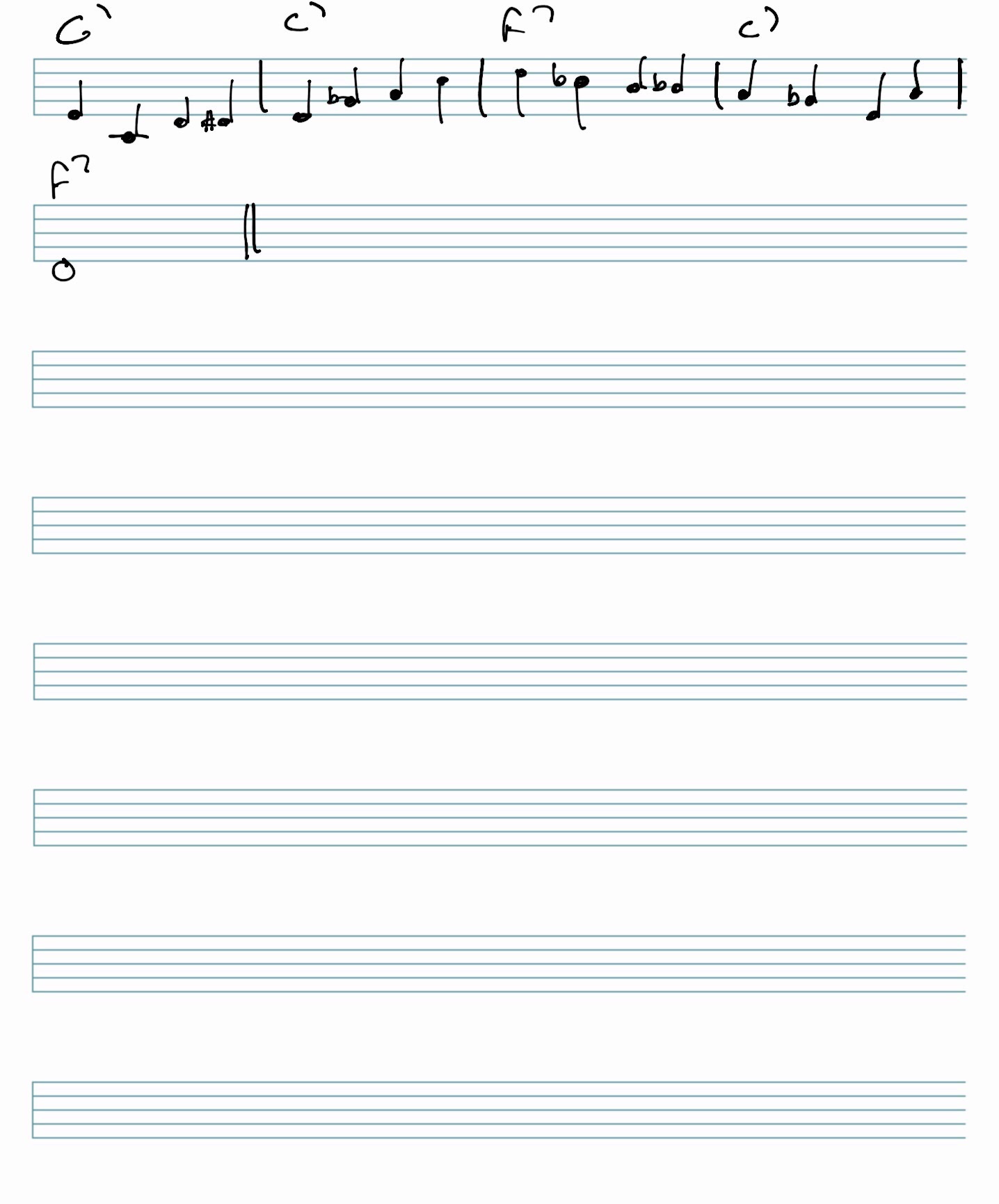
Analysis of Blues Bass Line
Now that you’ve played through that bass line check out the analysis of it. I marked most of the approach tones that we have been talking about. This time when you play through it pay close attention to those approach tones. Listen to how they lead your ear to the next chord or root note.
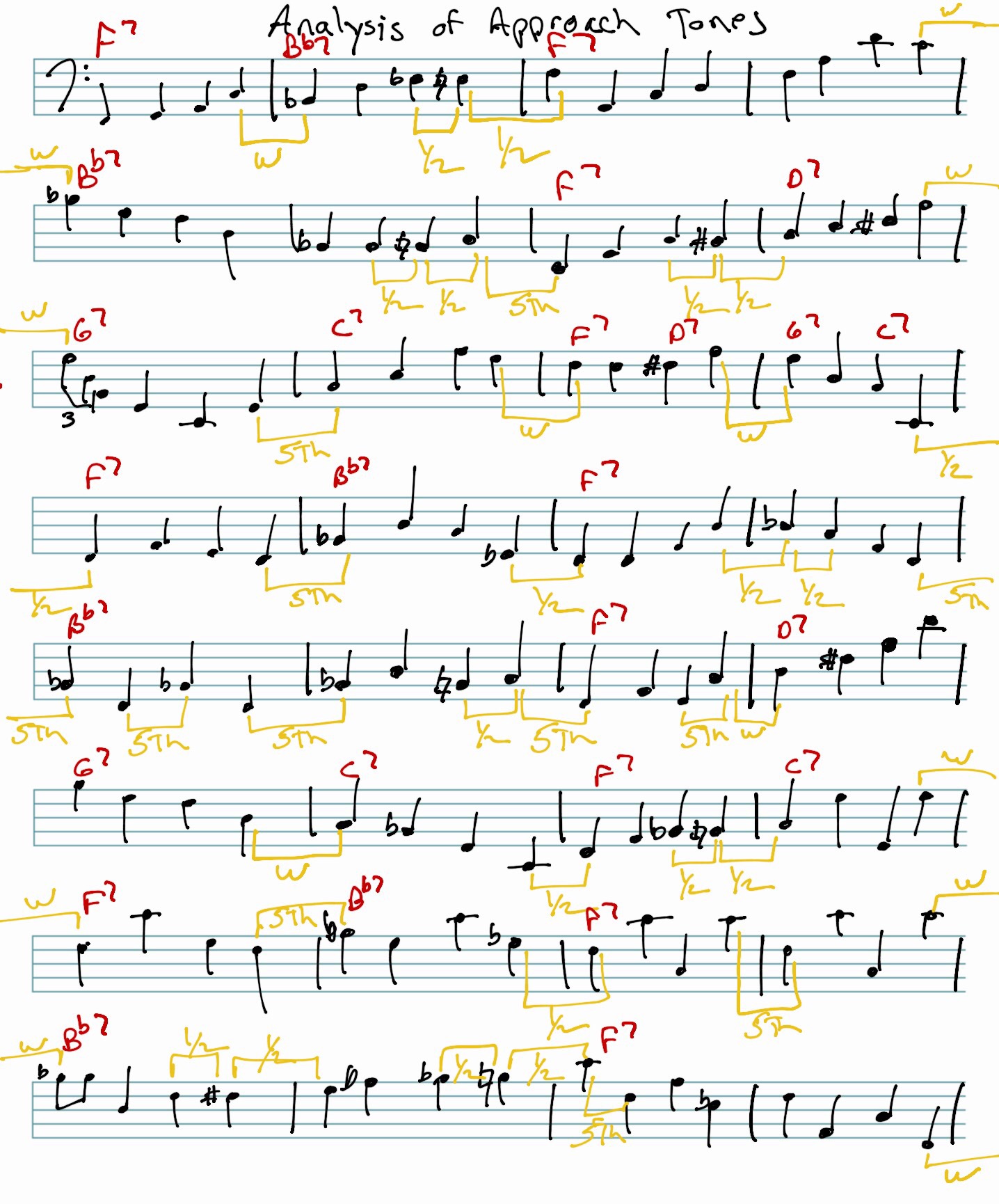
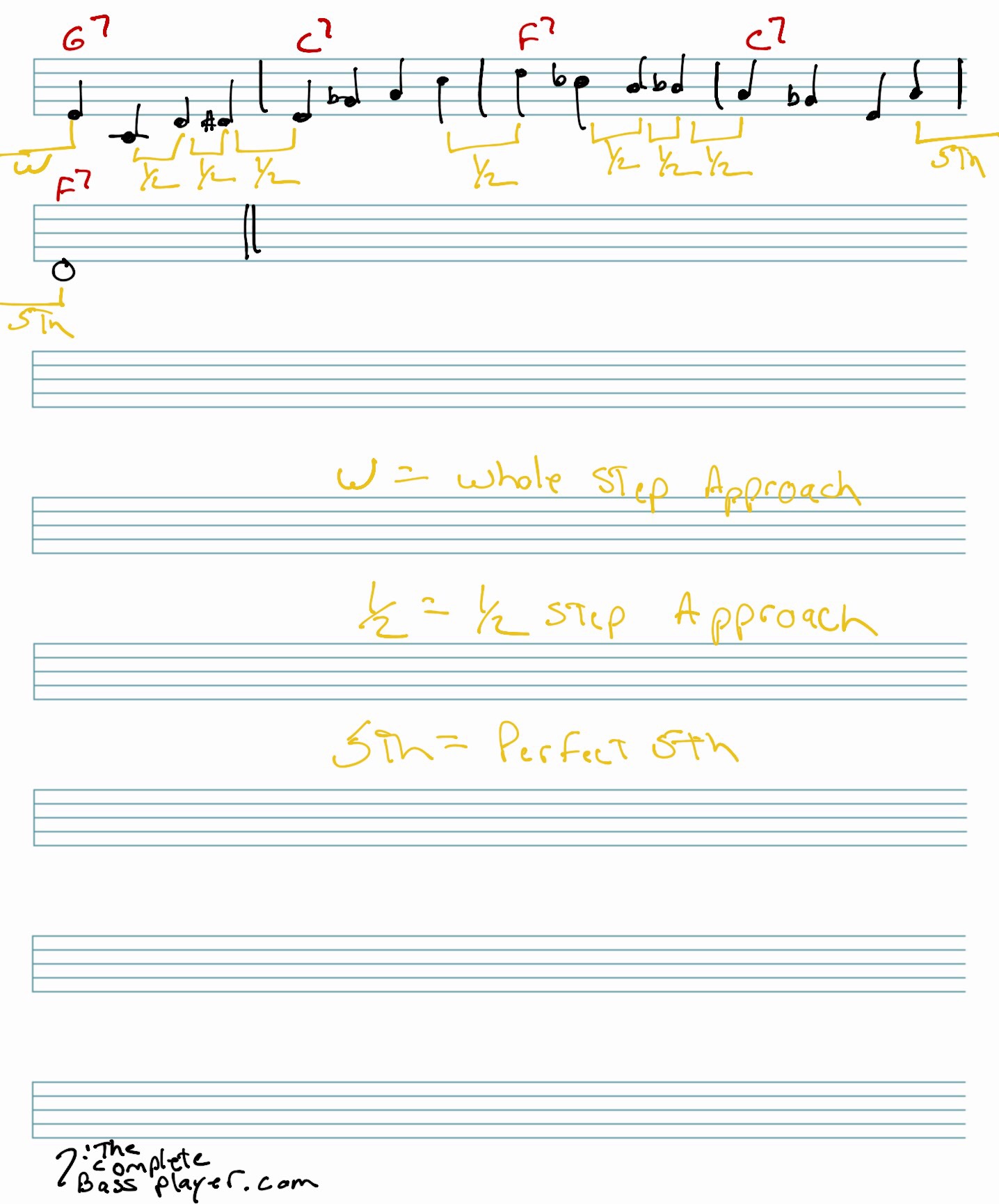
Can You Handle It – Larry Graham
The last example we are going to look at is “Can You Handle It” by Larry Graham.
You can see from this example that not matter what style of music you are playing, the bass line will be full of these approach tones.
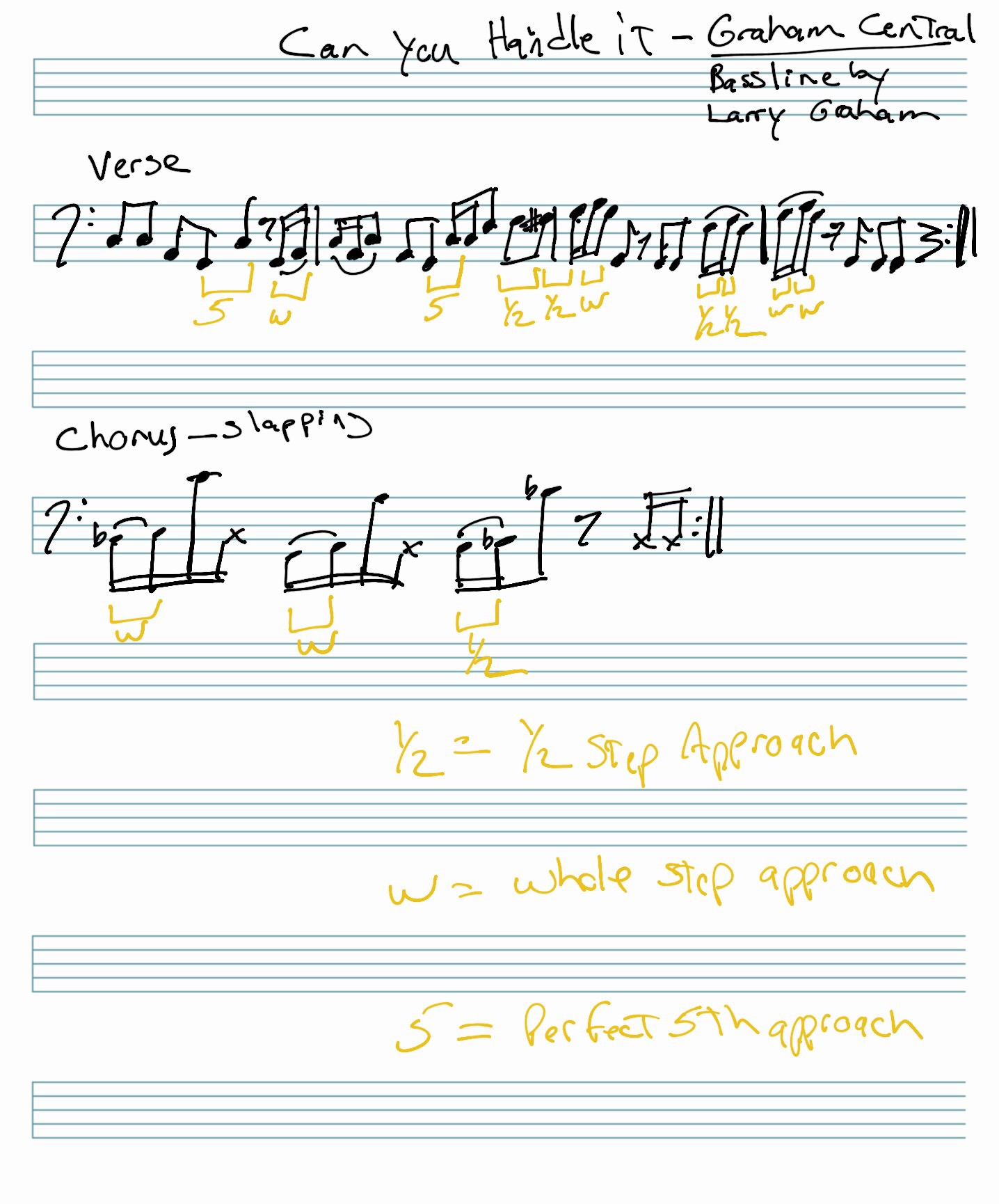
If you are unfamiliar with this bass line or Larry Graham check it out here.
How to start using Approach Tones
If this is a new concept for you then you should just focus on the 1/2 step and perfect 5th approach tones. Whenever you are learning a new concept keep things simple until the new skill becomes easy for you. Once it is easy, start adding more complexity to it (double approach tones, enclosures, 5of5, etc.).
There are a number of different ways that you can work on using these approach tones. I am going to give you two ideas for working through these approach tones. The first way to work on this is to write out walking bass-lines using these concepts. The steps are simple:
- Pick roots for the 1st beat of each measure – this will give you an overall shape for your bass line.
- Pick approach tones for 4th beat of each measure – here is where you want to use your approach tones.
- Fill in other notes for beats 2 and 3
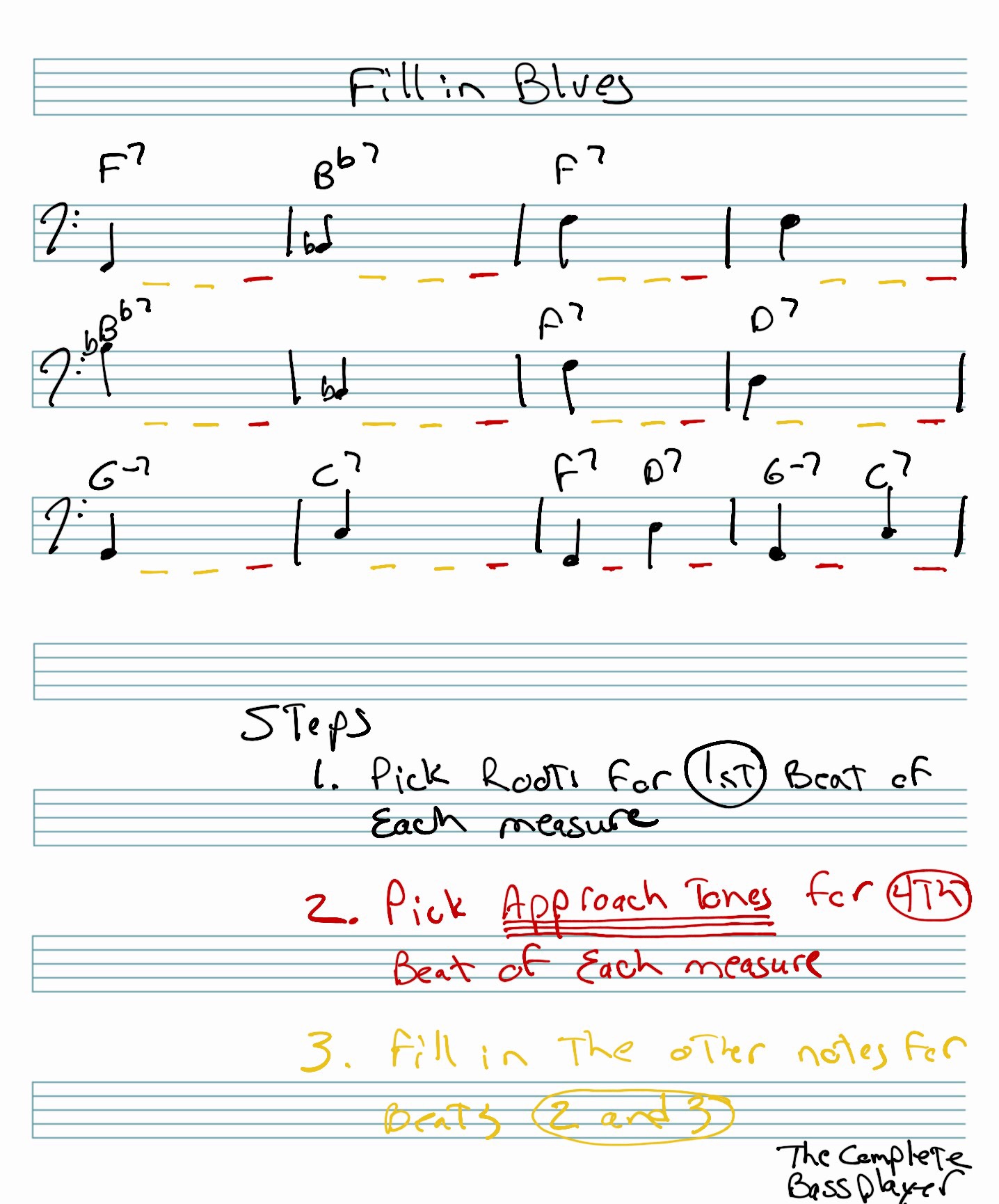
The second way to work on this is to transcribe a bass line and then analyze it just like I did for the Larry Graham bass-line earlier.
- Transcribe Bass line – learn how to play the bass line and write it down with musical notation
- Analyze it – looking for 1/2 step and perfect 5th root movements
- Play through bass line listening to how these approach tones shape the line
Like most things in music getting this down takes practice. Pick bass lines and songs that you want to learn and the time will fly by. Have fun practicing these ideas and if you have any questions or need any help along the way just ask.
FREE PDF’s In Toolkit
- Analysis of F Blues
- F Blues Bass Line
- Fill in Blues Bass Line
- Can You Handle It Bass Line
Hope you enjoy these Practice ideas…
PDF Bass Clef & Tab versions are in theBass Toolkit Area
Not a member already?
Sign up for Free!
